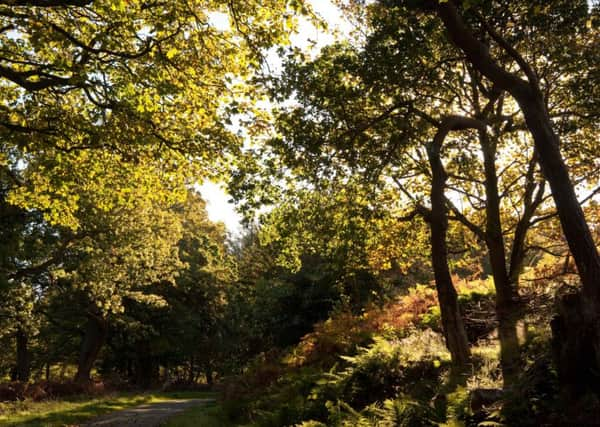Wood thinning will help PAWS grow and flourish in the future


But the move is only a temporary measure, allowing Forestry Commission Scotland to fell a small number of trees.
The aim is to create more space and light for the remaining trees – ensuring the woodland survives and thrives for future generations.
Advertisement
Hide AdAdvertisement
Hide AdBeat forester John Ogilvie said: “It will gradually improve the quality of the woodland for wildlife and create a more attractive landscape.
“While the work is taking place, we will need to temporarily close some paths to ensure public safety.
“This will be done to try to minimise disruption to users and we will provide diversion routes, where possible.
“However, there will be a few occasions when it will not be possible for us to provide a diversion, so these sections will be closed.
Advertisement
Hide AdAdvertisement
Hide Ad“We’re asking members of the public to follow signs and instructions on site to help us manage the work safely.”
The webpage – scotland.forestry.gov.uk/visit/callendar-wood – will also post regular updates to ensure people are kept fully informed.
Most of Callendar Wood is classed as PAWS – a Plantation on Ancient Woodland Site, once dominated by native tree species.
However, over the course of many centuries, native species have been lost and non-native species introduced, in particular non-native conifers.
Advertisement
Hide AdAdvertisement
Hide AdForestry Commission Scotland’s aim, in the long term, is to gradually restore Callendar Wood to mainly native species.
John explained: “To achieve this we will, over many decades, gradually reduce the proportion of non-native conifers, such as Sitka spruce, as well as removing non-native broadleaves such as Sycamore which will otherwise end up dominating the woodland.
“The thinning operation we are now undertaking is part of this process.
“We will encourage and promote the growth, regeneration and spread of existing native species, along with introducing others.”
Advertisement
Hide AdAdvertisement
Hide AdHowever, the importance of Callendar Wood as part of the ‘designed landscape’ in the Callendar Estate will not be forgotten either.
A number of conifers and non-native trees will be maintained as a result.
“We will be predominately focusing on areas of conifers, thinning them out to improve the timber for the future,” explained John.
“We will also be actively removing the Sycamore from the woodland as it is a non-native species.”
Advertisement
Hide AdAdvertisement
Hide AdThis work is the first shoot of a management plan for the wood, which will literally continue forever.
John added: “Our long term aim is to achieve a woodland diverse in species, structure, character, texture and biodiversity.
“We will achieve this by regenerating seeds from existing trees and planting seedlings of native species not currently present in the wood.
“We will start this management in the next five years but it will be an on-going process over many decades.
“Indeed, the process of felling trees and bringing on the next generations will continue forever!”